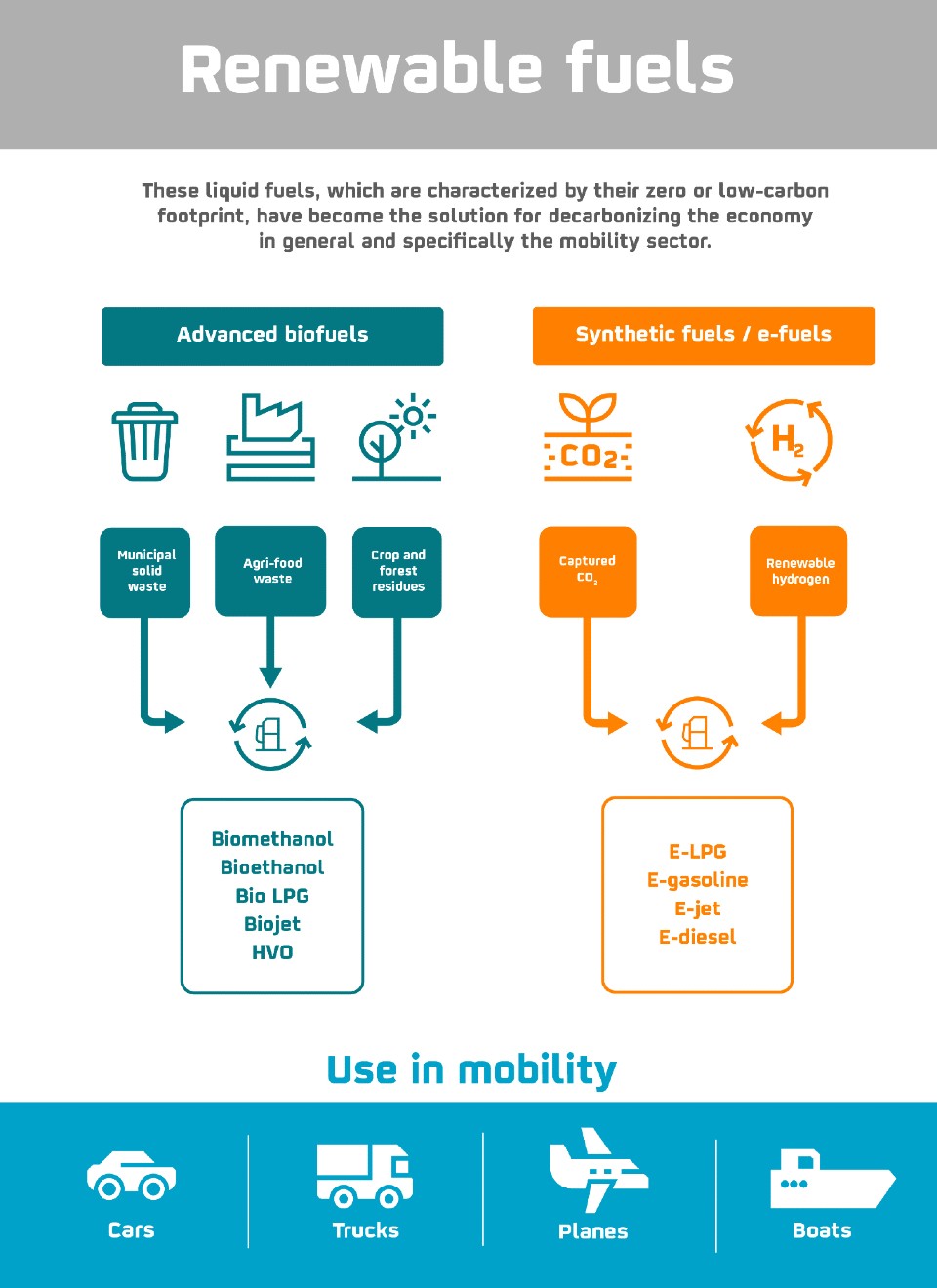
Biofuels in aviation and maritime transport
Biofuels in aviation and maritime transport
The waste that will power the planes and ships of the future
Renewable fuels could play a key role in reducing emissions from long-haul and heavy transportation, which has not yet been electrified
In the 1985 movie 'Back to the Future', Doc, the scientist, used garbage— specifically banana skins and leftover beer — to power the legendary car that would allow Marty McFly to travel back in time. Over 30 years later, biofuels, generated from waste, are not only no longer science fiction, but they're on the cusp of being another solution to mobility. Now it's our turn to travel to the new future marked by the European commitment to reduce 90% of CO₂ emissions from the transportation sector by 2050. Fasten your seat belts.
When thinking about how to reduce transportation emissions, we may immediately think of driving an electric car to work, but what happens when large vehicles have to travel long distances, often with unthinkably heavy loads? "Developing a much wider network of charging points is necessary for electric vehicles to be able to freely move away from their charging point, especially heavy transportation, which requires greater range," says José Víctor Esteban, secretary general of Fundación Corell.
According to Esteban, the Spain’s geographical layout, with a hub like Madrid and the rest of the major cities over 300 kilometers away, "does not help the viable electrification of heavy transport in the short term." And a third aspect to take into account: "We still don't have maintenance professionals or anyone who knows know how to optimally drive these electric vehicles." Additionally, there is a lack of product availability, as today there are very few electric trucks and those that do exist are prototypes or in limited production.
Given these limitations, experts from the Berlin-based clean transportation ideas lab think tank Agora Verkehrswende conclude in their studies that "ships and aircraft, for example, will continue to need liquid or gaseous fuels in the future in order to operate." The key will be to incorporate fuels that have a low carbon footprint, known as renewable fuels.
Origin of renewable fuels and their use in mobility
Origin of renewable fuels and their use in mobility

These include synthetic fuels — produced using captured CO₂ and renewable hydrogen — and biofuels made from all kinds of biological waste, from solid urban waste to agricultural or forest waste. The use of these biofuels leads to a reduction in carbon dioxide emissions of at least 65% compared to traditional fuels, and in some cases up to 100%.
The main advantage of renewable fuels is their physical-chemical properties, similar to those of conventional fuels, which means they can be used in existing combustion engines. "Their use would make it possible to take advantage of existing distribution infrastructures and vehicle fleets. Renewable fuels are seen as the immediate solution to the energy transition for light transport, especially in the wake of the COVID-19 crisis," which could slow down sales of electric cars, says Andreu Puñet, general director of the AOP.
Renewable fuels for every type of transport
Renewable fuels for every type of transport
- Light transportation
- Heavy transportation
- Aviation
- Maritime transportation
The opportunity of renewable fuels for Spanish industry
The opportunity of renewable fuels for Spanish industry
Renewable fuels can also be a great opportunity to create jobs and boost industry and the economy. “The development of a sector dedicated to renewable fuels can have a highly positive impact, creating quality jobs, fostering R&D and technological development, and contributing to the circular economy," predicts Víctor Ruiz Ezpeleta, project management professor at EAE Business School. This is in addition to the fact that its production and distribution can be carried out using existing industrial facilities such as refineries.
"If we bet heavily on R&D and large-scale production, production costs will start to go down, which means there could be a boom in the renewable fuels sector due to more competitive prices. With the fundamental support for technology, this scenario could happen in four, five, or six years," adds Ruiz Ezpeleta.
For the time being, the Spanish Royal Decree promoting the use of biofuels, approved in March, establishes the obligation of 10% penetration of biofuels in transport by 2022. A target in line with the National Energy and Climate Plan’s (ENCP) minimum quota of renewable energy in transportation of 28% by 2030. Our first mandatory stop on the journey into the future.
Published in El Confidencial




